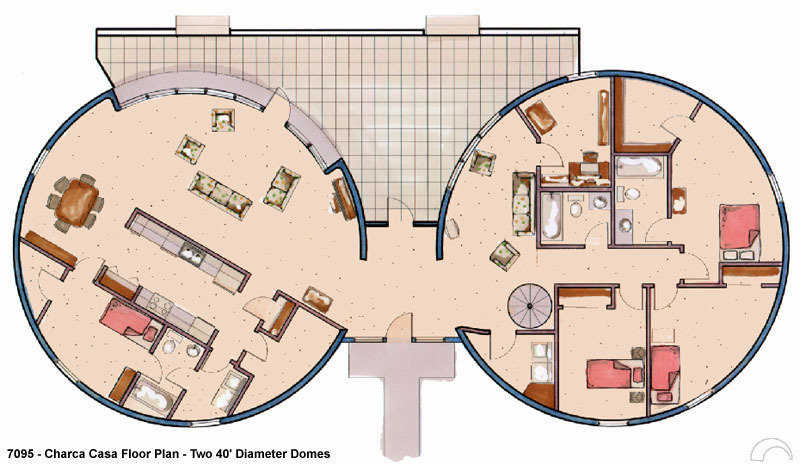Two in one
Several years ago, in Palestine, Texas, I met an elderly but active couple who lived in what the husband had designed, built and called “a Compound House.” It consisted of two conventional homes connected by a covered patio, one home larger than the other, but each with two bedrooms. The couple lived in the larger home and their two sons occupied the smaller.
Over the years I have thought about that Compound House many times, the husband’s reasons for designing it as he did, how it made sense and how adaptable it would be to our lives.
A space of their own
At the time they built their Compound House, the couple had two sons, aged 16 and 17. The boys, delighted by their semi-independence, joined their parents for family meals and get-togethers, but slept in and maintained their own quarters. This arrangement provided them with a real-life opportunity to learn what independent living necessitates.
The man said that later, when the sons married and began families of their own, they would come home for holidays and special occasions, enjoy dinner and the group’s activities. But as their children tired and night came, the sons would bed everyone down in what used to be their house.
It was really nice having the two, separate homes — especially when company came, the man confessed. It gave all of them a convenient, comfortable space of their own.
Between visits
When visitors were not occupying the smaller home, the wife used it for her crafting. She enjoyed spreading all her stuff, working, then just walking away without cleaning it all up between work times.
Thoughts of the future
This couple had really thought about possible future uses of their Compound House. The man told me that they knew that eventually one of them would lose the other. When that occurred, the survivor could move into the smaller home, and one of the sons could occupy the larger one. In fact, that’s exactly what did happen, about a year later, when the husband died.
Making sense
I have thought many times about the Compound House and how it makes sense. So why don’t we see more of them?
We don’t see more partly because of the energy costs of conventional structures. Most people build square houses. Reason: To minimize heating and cooling costs, they want the least amount of surface area facing the weather. So, if you build two conventional houses you have a doubled surface area facing the weather and an almost doubled utility bill. That makes conventional Compound Houses impractical.
A practical solution
With a Monolithic Dome, doubling the surface area wouldn’t matter because the energy lost through the dome’s shell is next to nothing. Consequently and fortunately, a Monolithic Dome Compound House really does make sense!
A Compound House of Monolithic Modules
With Monolithic Modules you can create a Compound House by mixing and matching modules that do not have to be built all at the same time. Each can be added as the need, desire and financial ability for it arises. You can start with a basic home module with two or three bedrooms, then add one for guests or nearly grown children, then another for recreation that might include a game room or pool and so on. A module can be designed to serve all kinds of purposes. You can even have modules that eventually could be made into rentals.
If land is a constraint, you may have to build multi-story, tightly constructed housing. But when land is not a problem, seriously consider the Compound House.
Life brings change
As we go through life, we need options. Most of us start off young, with a young family; then we have an older family and then we have a gone family. Eventually, we may get to the point of becoming like dependent children, in need of at least minimal care.
I think of this often when I see the McMansions being built — huge houses, generally built by a couple in the latter part of their careers, often when the children are almost ready to be on their own.
At such a time, wouldn’t it be better to have and use modules, that if not needed could be rented or shut down?
Admittedly, a Compound House of Monolithic Modules takes planning — but what a practical and wonderful legacy!
